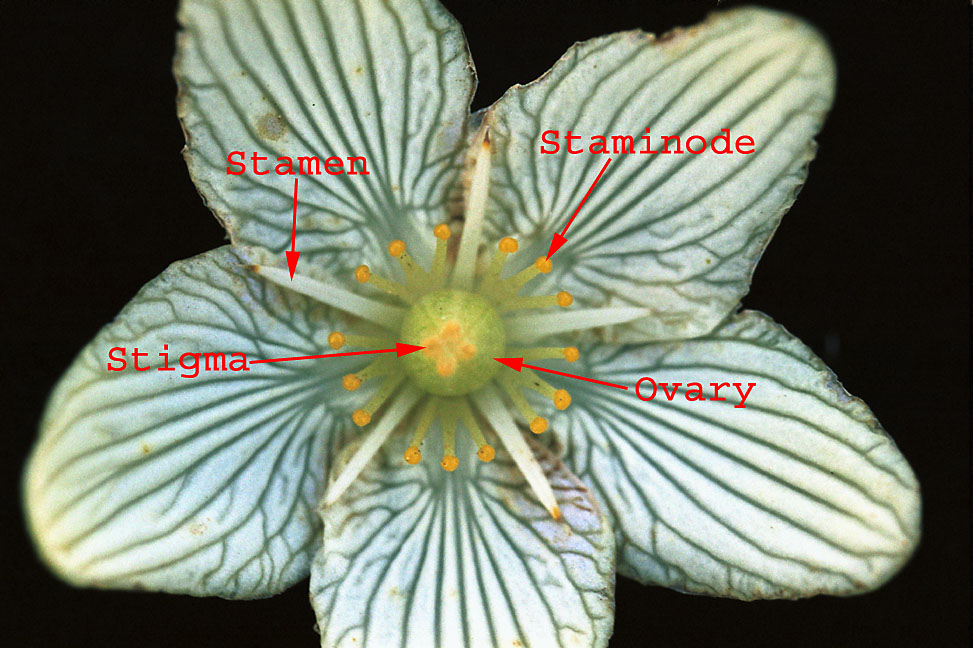 | Glauca Characteristics
 | petals 3 or more times longer than
sepals |
|
 |
Parnassia Characteristics
 | flowers singly on long stems |
 | 5 sepals and 5 sepals |
 | 5 clusters of small, gland-tipped,
sterile stamens (staminodia) opposite the petals |
 | 5 fertile stamens alternating with
petals |
 | superior ovary |
 | stigmas usually 4, nearly sessile |
|
 |
Saxifragaceae Characteristics
 | flowers usually perfect and regular |
 | usually 2 floral rings (petals absent
in Chrysoplenium) |
 | hypanthium usually well-developed,
often with a disk |
 | receptacle cup-shaped |
 | 5 (sometimes 4) sepals, separate or
partially united |
 | 5 (sometimes 0 or 4) separate petals |
 | 5 or 10 stamens |
|

